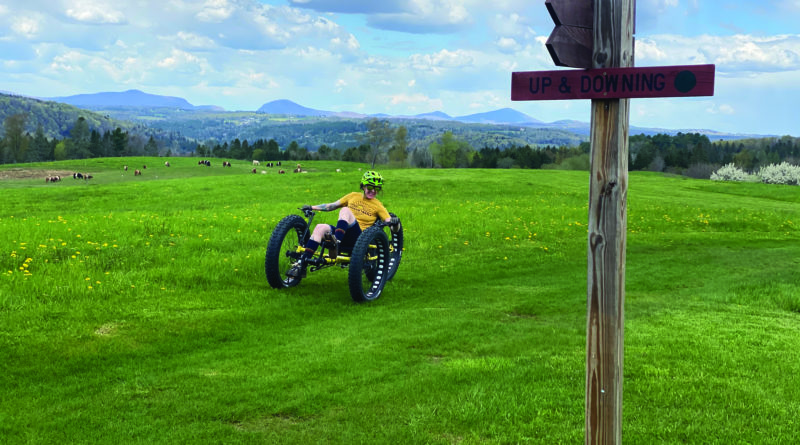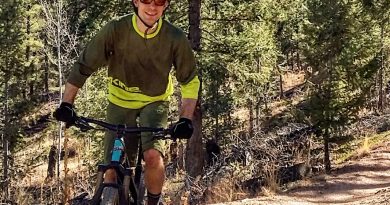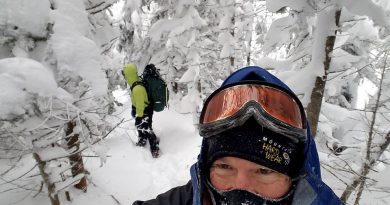Gaining Access: Trails for All
When Zimmer Hayes was a ski racer at UVM and, later, a downhill mountain bike racer, he’d head to Bolton Valley resort to ride some of what he calls “the gnarliest trails out there.” He knows, as he helped cut some of those trails years ago. But as Bolton Valley changed hands, the trails were not maintained. People still rode them but the lifts didn’t run and trails just got, well, gnarlier.
Now, two things are changing for Hayes and others: Bolton Valley Resort is committing to mountain biking and will start lift-served mountain biking on July 1.
The other thing is that Hayes is riding an e-bike. “I have one and I just ordered another from Ranch Camp. I’m 41 now and if I can get a little pedal-assist, I’m all for it.”
The good news for those who are riding e-bikes is that Gov. Scott signed into law S. 66, which states squarely: “An electric bicycle is not a motor vehicle and is a vehicle to the same extent that a bicycle is a vehicle.”
This means that trails that have been closed to motorized vehicles are now open to e-MTBs, though some networks still prohibit them. At Kingdom Trails, for instance, e-bikes are not allowed though the organization is reviewing that policy and seeking input from users and landowners.
“There’s a real patchwork of regulations,” says Nick Bennette, the new executive director of the Vermont Mountain Biking Association, whom we profile in this issue. VMBA hopes to have updates on e-bikes and the chapter regulations around them on its website.
Around Vermont, there’s been a recent push to make trails more accessible – to e-bikes, handcycles, recumbent bikes and wheelchairs. The movement has been spurred by organizations such as the Kelly Brush Foundation, which works nationwide to create opportunities for people with spinal cord injuries to get back into sports and Vermont Adaptive – which just broke ground in Sugarbush on its second adaptive sports facility. But it’s also getting a boost from local organizations such as Green Mountain Adaptive, based in Lamoille County or Adaptive Sports at Mount Snow, as well as from trail networks themselves.
As Bennette notes, “The story we need to tell is that VMBA’s chapters are building trails that benefit everyone —hikers as well as riders.”
With the state devoting $5 million to the Vermont Outdoor Recreation Economic Collaborative (VOREC) grants this year, we are likely to see more trail growth similar to what the first VOREC grant rounds ($100,000 and $200,000) helped to kickstart in Randolph and other areas. The state hopes to award grants in every county. and a new program manager, Jackie Dagger, has been hired. New this year, non-profits are eligible to apply for the grants as well as municipalities.
It’s through grants like these and the hard work of chapters and small towns that outdoor recreation has been growing in all corners of Vermont.
And it’s not just trail networks. As Wilson Vickers writes in “Vermont’s Best Skateparks,” we now have more than 34 skateparks in the state, including new ones in Brattleboro and Manchester.
What these efforts all have in common – allowing e-bikes, creating adaptive programs and the facilities they need, and building new skatepark — is this: Vermont is broadening its appeal. It is working hard to make the outdoors more accessible not only to the hard core athletes the Green Mountains are famous for, but to everyone.
And that’s something to celebrate.
—Lisa Lynn, Editor




